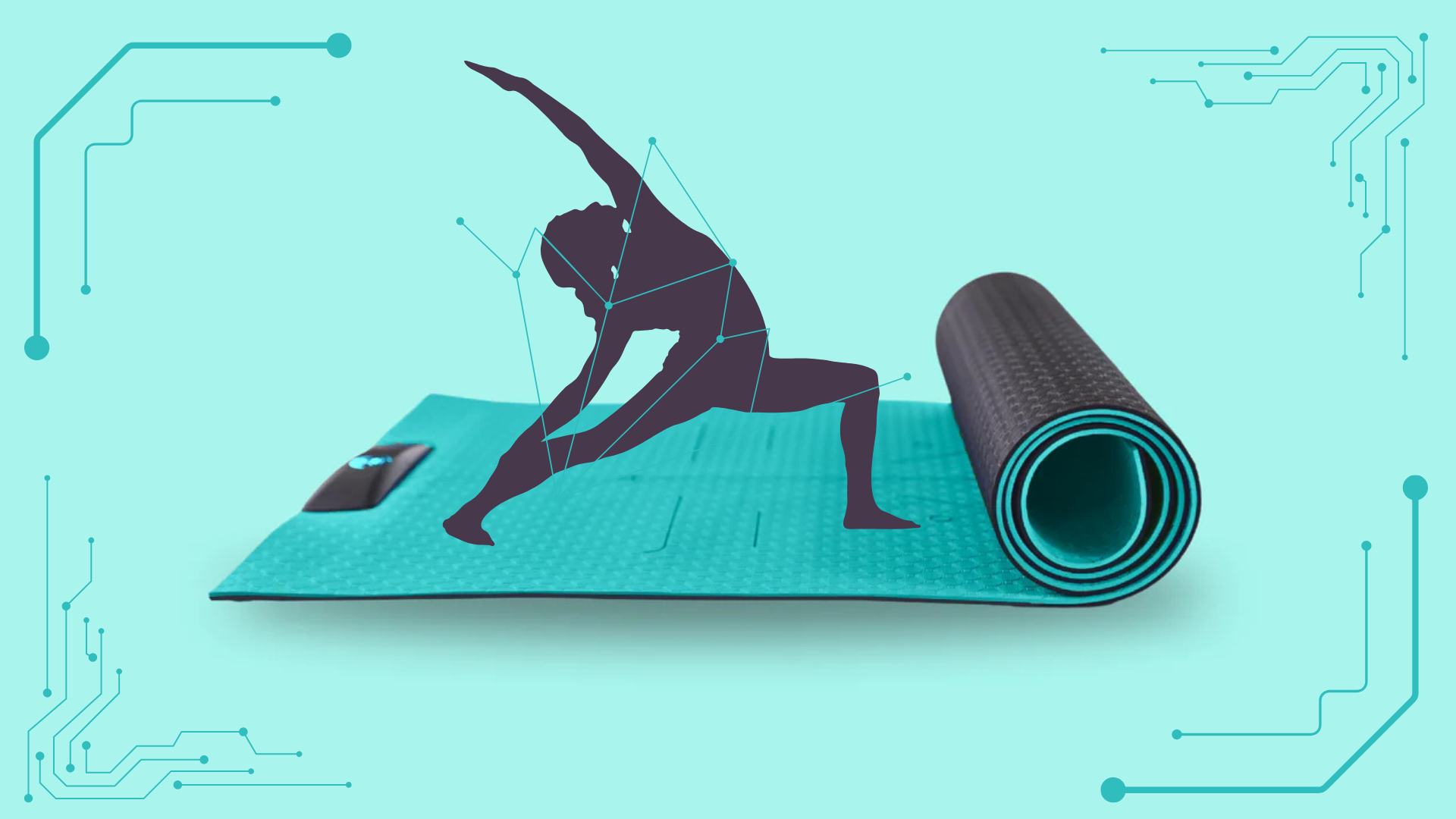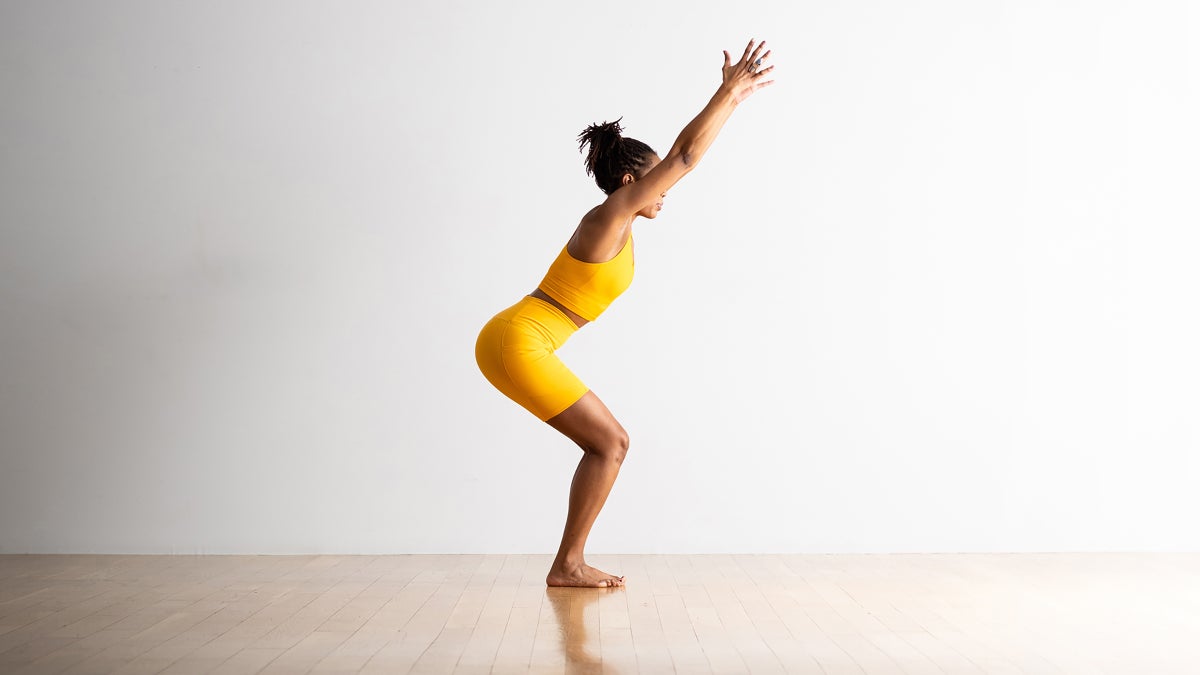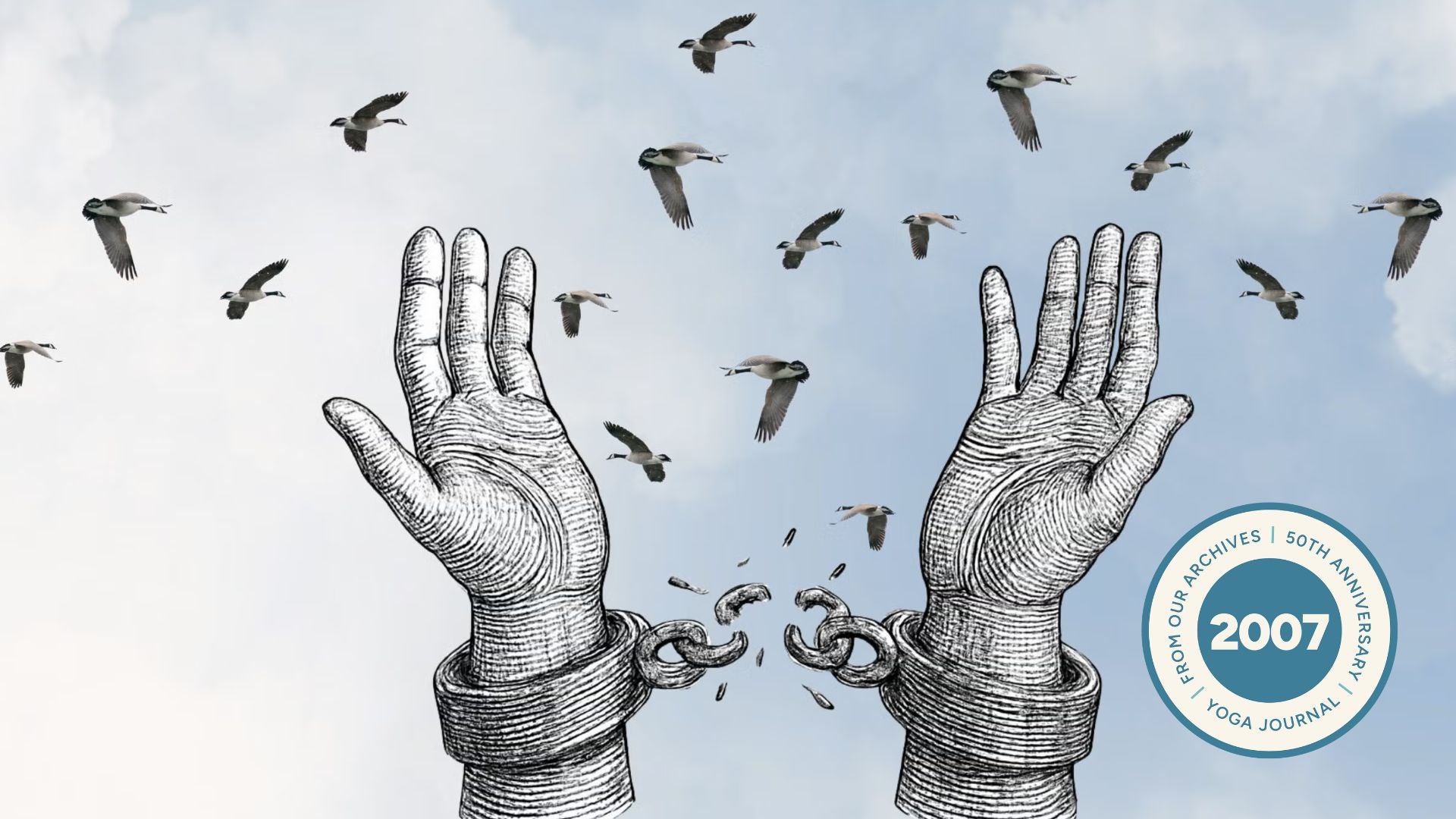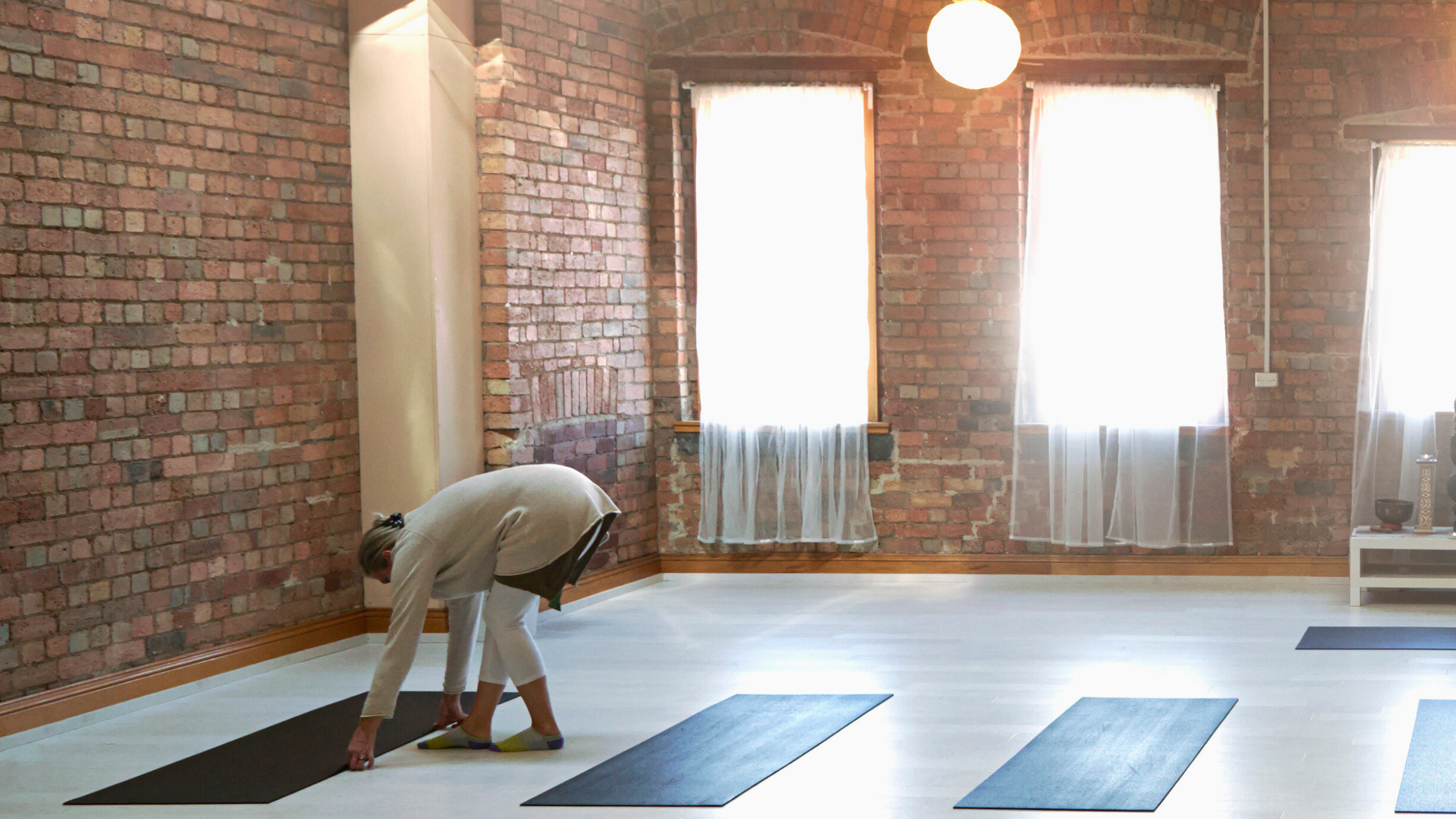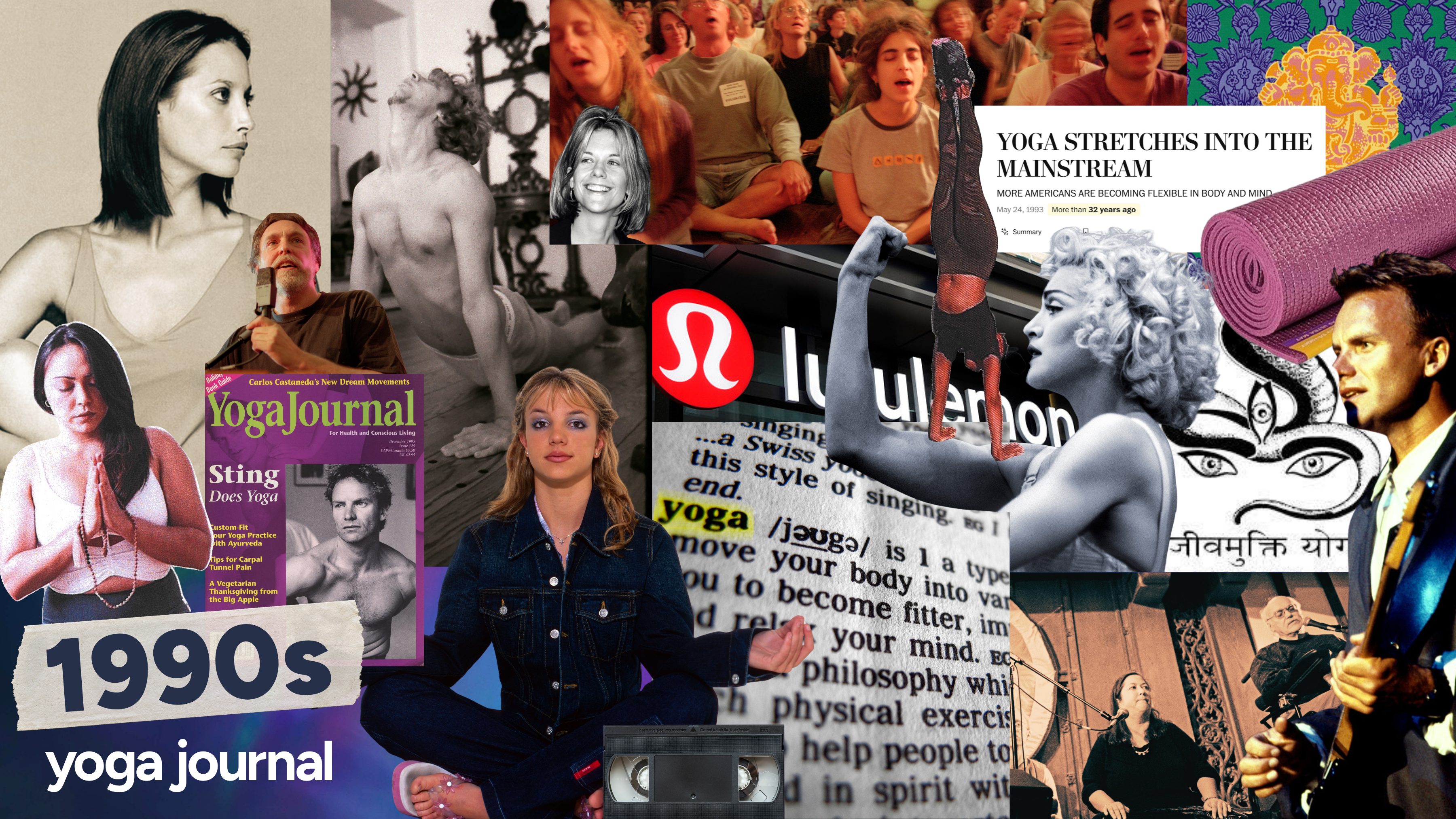Published October 21, 2025 08:40AM
Throughout America’s obsession with yoga the last half century, our perception and interpretation of it has changed considerably with each decade. Take the 1970s. Here curiosity about consciousness and desire for greater connection to self and others was as much a part of the practice as the physical poses. Seekers wanting more were introduced to yoga in various ways, from Alice Coltrane to Lilias Folan, amid the backdrop of the era’s iconic bell bottoms, disco, and peaceful resistance. The following article explains all that and more as part of Yoga Journal’s 50th anniversary coverage of yoga’s evolving role in America throughout the 1970s, 1980s, 1990s, 2000s, 2010s, and 2020s.
In 1972, the United States was in a state of cultural and political upheaval—still reeling from the war in Vietnam and the Civil Rights Movement, energized by the rise of feminism and environmentalism, and stirred by anti-war protests and political scandals. A restless, youth-driven counterculture was challenging the status quo and reimagining art, music, and fashion as tools of resistance and self-expression. Peace, free thought, and social justice echoed as rallying cries.
Amid all the upheaval, one of the most common questions I heard wasn’t political—it was personal. “What’s your sign?”
That year, I was a sophomore at Howard University, navigating a time of transition. I had just moved into my first apartment and transferred from the School of Liberal Arts to the newly established School of Communications, eager to explore creative and academic and career paths.
I had recently picked up a copy of the book Astrology: The Divine Science, a book that had evolved from a thesis by two Harvard graduate students. It aligned with my curiosity about the cosmos, fate, and the self.
One evening a classmate, an older student and Vietnam veteran, invited me to our humanities professor’s home. The moment I stepped inside, I sensed a change. The space was adorned with vibrant paintings, amethyst and quartz and agate crystals on tables, brightly colored drawings and tapestries, and the aroma of unfamiliar spices. Beads swayed gently in the doorways while cushions covered in kaleidoscopic fabrics and scattered across the floor invited us to sit and settle into the moment.
Our professor and his partner—a woman born and raised in Thailand—engaged us in rich, thought-provoking dialogue that stretched the mind in unexpected directions. She emerged from the kitchen at some point, gracefully carrying trays of fragrant dishes. It was my first taste of Thai cuisine, an explosion of flavors unlike anything I had experienced.
At one point in the evening, she placed a record on the turntable, and for the first time, I heard Alice Coltrane’s Journey in Satchidananda. I was instantly captivated. There was something mystical, haunting, and spiritual about it, and I fell in love at first listen.
Moved by the moment, she began to flow gracefully through what I would later come to understand as a yoga vinyasa. Her continuous movement from one posture to another resembled a slow, spiritual ballet. She waved me up from the cushions to join her in movement. That evening was a turning point—a fusion of ideas, flavors, music, and movement that had left an indelible mark on me.
Several days later, as I was flipping through TV channels—manually, of course, since remote controls weren’t common in those days—I stumbled upon a public broadcasting program called Lilias, Yoga and You. On the screen, Lilias Folan was gracefully lifting herself into Shoulderstand (Sarvangasana).
I was immediately captivated. I had practiced that exact movement countless times during junior high and high school gym classes, although back then, it was simply called “the bicycle.” During those calisthenics classes, I had often experimented with lowering my feet over my head into what I later learned was Plow Pose (Halasana).
Until that moment, I had no idea these movements had names, let alone ancient origins. This sparked a question that has stayed with me: “What exactly is yoga?”
In the early 1970s, I was unaware of any yoga studios in Washington, D.C. Occasionally, sangha—a gathering of like-minded individuals and spiritual seekers—would occur. The focus was usually on meditation, art, music, and philosophical discussions about the meaning of life. Hatha yoga, the physical practice, was rarely included.
After happening upon Lilias, Yoga and You, I began practicing regularly, following along in my living room. Although yoga classes for the general public were rare back then, the sangha gatherings were abundant and allowed us to explore consciousness, creativity, and spirituality.
The physical practice did not challenge me. I sought deeper: to understand the kind of human being I wanted to become and how to live purposefully. I eventually found group classes that took place not in studios but in nondenominational churches, bookstores, and other living rooms. It was in those spaces that I began to explore the philosophy of yoga. Throughout this time, I never paid for yoga.
And there were books. A Sikh in white clothing handed me a copy of the Bhagavad Gita on a street corner in D.C. I purchased The First and Last Freedom by J. Krishnamurti and received The Kybalion as a gift from a friendly bookstore clerk. Eventually, I came across Yoga: Science of the Self—by the same authors as my beloved astrology book, Marcia Moore and Mark Douglas—and I felt a convergence of all these seemingly disparate events. My journey of svadhyaya, or self-study, had begun.
I shared many conversations in different spaces and places. There were discussions and arguments with individuals who challenged and broadened my thinking. We debated, reflected, cried, and stopped as well as rekindled friendships, if for no other reason than there was no one else who would tolerate this discourse. We were motivated by a shared quest for meaning. These exchanges, though diverse, were tied together by a single theme: yoga. Not the kind practiced in leggings on a mat, but the lived experience of unity—of integrating the many facets of oneself into something complete. This was the union of my life.
My ambition was to understand the kind of human being I wanted to become and how I would express that in daily life. Through marriage, motherhood, divorce, and the loss of loved ones, the study and practice of yoga helped stabilize my mental and emotional state. It taught me to see myself more clearly and to discern between the persona I projected to the world and the real me I was in my private life. That distinction became a powerful form of self-liberation.
I began to understand how easily the mind and emotions can be manipulated and how this becomes more difficult with explicit self-awareness. I learned to be honest with myself, to embrace my strengths, and to acknowledge my shortcomings.
Over time, I realized that my greatest teachers weren’t certified yoga instructors. They were my maternal grandmother, my parents, my eighth-grade English teacher, a big-sister mentor, a college professor, and many friends and strangers. These acharyas—spiritual guides—shared with me their lived wisdom.
It is from them that I learned yoga is not just something practiced on a mat in a studio while wearing special clothes. Yoga is not a state of doing. It is a way of being. Yoga is life. I am my yoga practice.
Years later, during my 300-hour yoga teacher training at Kripalu, I met a teacher named Carolyn Delluomo, known spiritually as Vidya, meaning clarity. Like many trainees, I felt uncertain about how to step into the role of teacher with authenticity. I was still searching for my own voice and presence. One day, as we passed each other in a stairwell, Vidya paused and said, “I’ve been watching you, and I sense some discord. Let me say this: you are enough. Just teach from your life.”
Those five words—just teach from your life—were among the most powerful I’ve ever heard from a yoga teacher. At that moment, I realized that the essence of what I had to offer wasn’t something I needed to invent or perfect. It was present in the life I had lived. The lessons, losses, joys, and questions—all of it was the yoga I had been embodying long before stepping into a training room.
The training didn’t teach me how to live with integrity, conviction, or truth—it affirmed what was already within me. It gave language to what I had long been practicing: the daily sadhana of living with awareness. I continue to study because, as I live, I continue to learn. And as I learn, I come to know myself more clearly. That, I’ve come to understand, is enough.
Editor’s Note: Yoga Journal was launched midway through the decade in 1975 yet remained primarily a teacher’s newsletter throughout its initial years. As such, it wasn’t available to many yet it was already well-entrenched in its mission to share the wisdom of the ancient practice. Following is a glimpse of the themes explored in the earliest issues.


